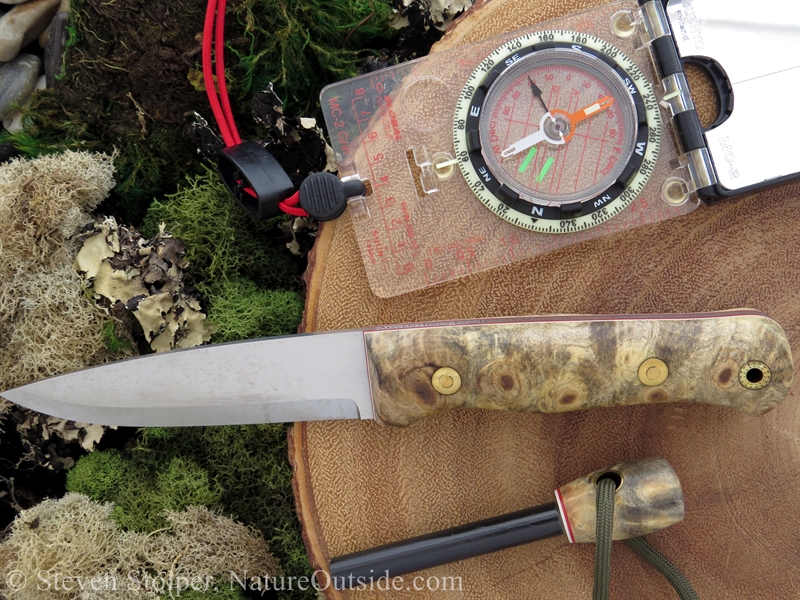
What is Bushcraft?
Bushcraft is the practical knowledge of our natural world. You can use bushcraft skills to provide shelter, water, fire, and food from materials found in your natural environment.
Bushcraft skills also lend us insight into the natural world. They help us build a connection to nature.
And one of the most important tools in bushcraft is the knife.
The Knife’s Role in Bushcraft
The knifeless man is a lifeless man.
– Nordic proverb
When you leave the house do you grab your cell phone?
Today, we wouldn’t dream of leaving behind this tool for communication, information, and navigation.
But not long ago, the knife was just as important. Our ancestors lived much of their lives outdoors. And the knife, as a cutting tool, was invaluable. Ancient man used flint knives and today we make use of modern supersteels. But the function of the knife in the wilderness is unchanged.
I use my knife to build shelter, start fires, purify water, and whittle animal traps. I carve tent pegs, fishhooks, and canoe paddles. My knife helps me collect plants for food, medicine, and even to construct a boat. If you spend time outdoors, your knife becomes your best friend.
The Great Knife Debate
If you want to start an argument, approach a group of outdoorsmen with the question: “What’s the best knife for…?”
Knives take many forms for many functions. And passions run high when defending our favorites. It’s even been fodder for one of my annual April fools jokes.
But most people miss the boat entirely. They recommend their favorite brands without thinking about the application. This article will not make that mistake. And if you’re reading this article to shop, stop reading and go to Ebay.
Instead, we will explore different types of knives that can help you grow your bushcraft skills. Each knife we own has something to teach us. And you should consider that when selecting a bushcraft knife.
The 12 Bushcraft Knives
So in the spirit of fun and learning, here are my recommendations for 12 knives you should own. You don’t need to own them all, it depends on the activities you enjoy. But each knife can guide you down a different path for growing your skills and knowledge.
This article contains affiliate links for some of the books I mention.
1. A Survival Knife
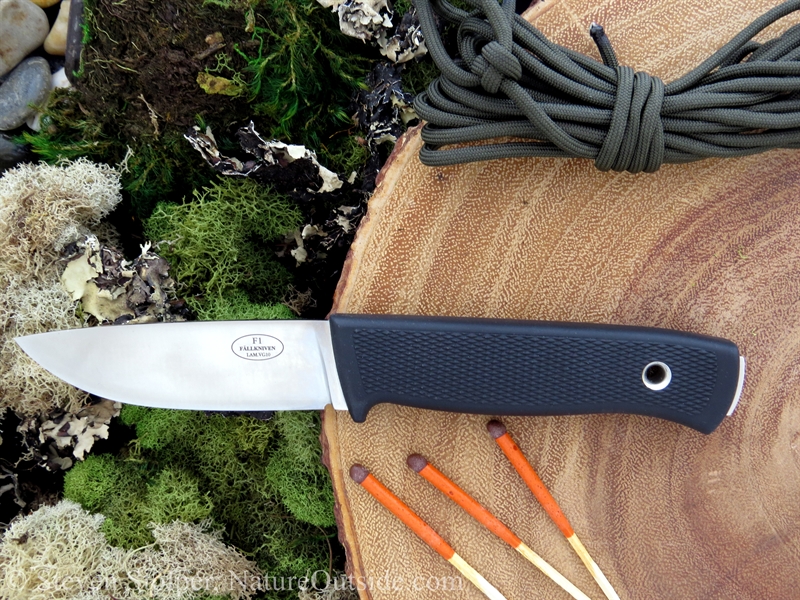
This Swedish survival knife was developed for fighter pilots in cold climates. Notice how the handle protects your hand from touching the metal tang.
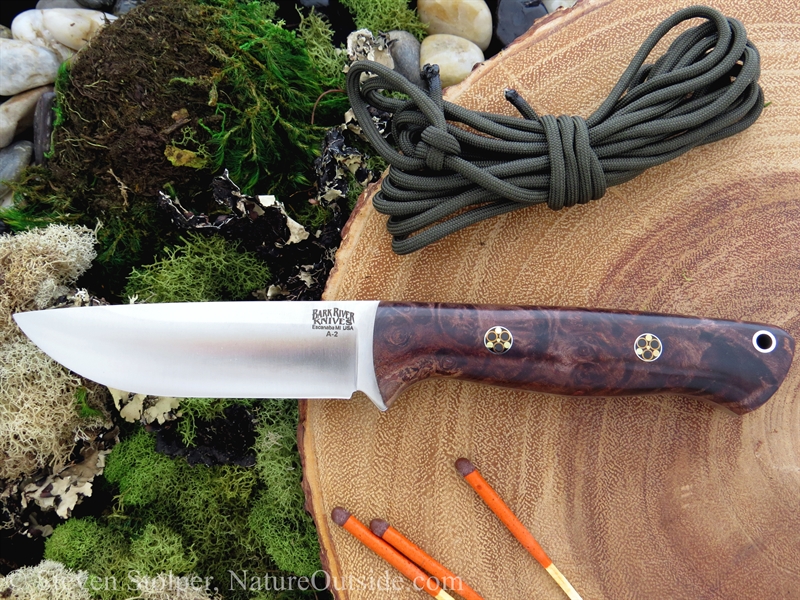
This survival knife has a thick 4.25 inch convex blade. The tang runs between the maple burl scales of the handle.
The standard joke is that a survival knife is the one you have on you when you find yourself in a survival situation. But the odds of landing in a survival situation increase when you’re in the military.
Survival knives grew from the need for isolated soldiers to furnish shelter, water, fire, and food from their surroundings. For example, fighter pilots can find themselves catapulted from their modern multi-million-dollar jets into a stone age existence behind enemy lines. The survival knife is designed to help them weather the ordeal.
Contrary to popular thought, a survival knife is not a “Rambo knife.” The blade is usually between 4 – 6 inches long, with a plain edge. And the smaller models are more popular in the civilian market. Smaller blades are easier to carry and manipulate safely.
Survival knives are robust. Blade thickness is usually around 0.180 – 0.250 inches. And many have convex grinds, which places more steel behind the edge than other grinds. Survival knives are generally made from durable, low maintenance, stainless steel.
This makes the survival knife a robust knife that can withstand abuse. One characteristic of survival knives is that they have a “full tang.” The steel that forms the blade runs through the handle as one piece. You can use your survival knife even if the handle material is damaged. The spine of the knife is also squared-off, so it can be used to strike a firesteel.
Note that sometimes beginners have difficulty learning “fine” bushcraft skills with a survival knife because of its thick, convex blade.
2. A Bushcraft Knife
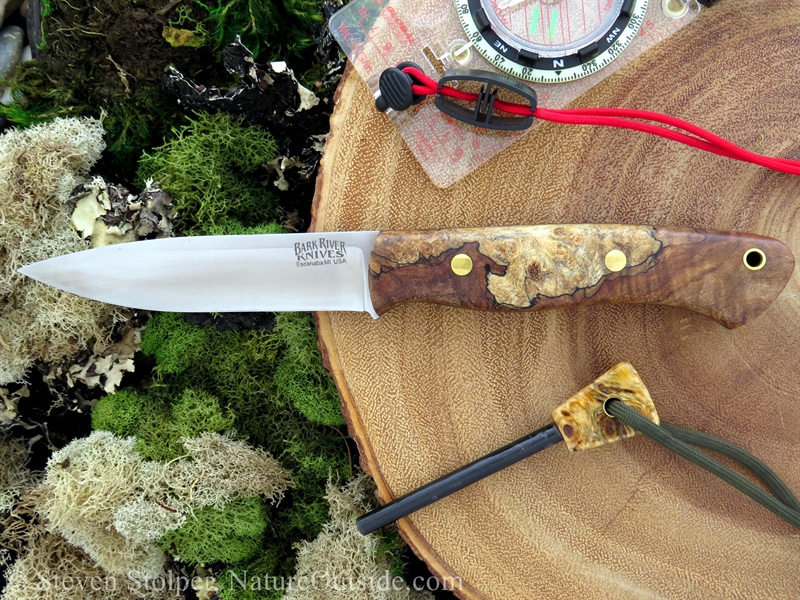
This bushcraft knife has a convex blade and a full tang. The handle is made from spalted maple burl.

This is a “woordlore” style bushcraft knife. It has a Scandinavian grind and full tang. The handle is made from California buckeye burl.
The bushcraft knife, as its name implies, is designed for people engaged in outdoor pursuits. There are a wide variety made today. The higher-priced ones frequently sport fancy handles made from natural materials.
Blade lengths vary from 3.5 – 4.5 inches. And knife thickness is usually between 0.125 – 0.170 inches. Most often, bushcraft knives have a Scandinavian grind. This grind makes it easier to do woodwork and to sharpen by hand. But you can find them with convex grinds as well.
The blades are often made from high carbon steel. They can be brought to a high sharpness and used with flint to generate sparks. But high carbon steel requires more care than stainless steel to prevent rust from appearing on the blade.
You often have the option to purchase a bushcraft knife with a choice of handle materials and in different steels, including stainless.
Bushcraft knives are almost always constructed with a full tang. Look for a square spine, whose edges can be used to strike a firesteel.
3. A Carving/Whittling Knife
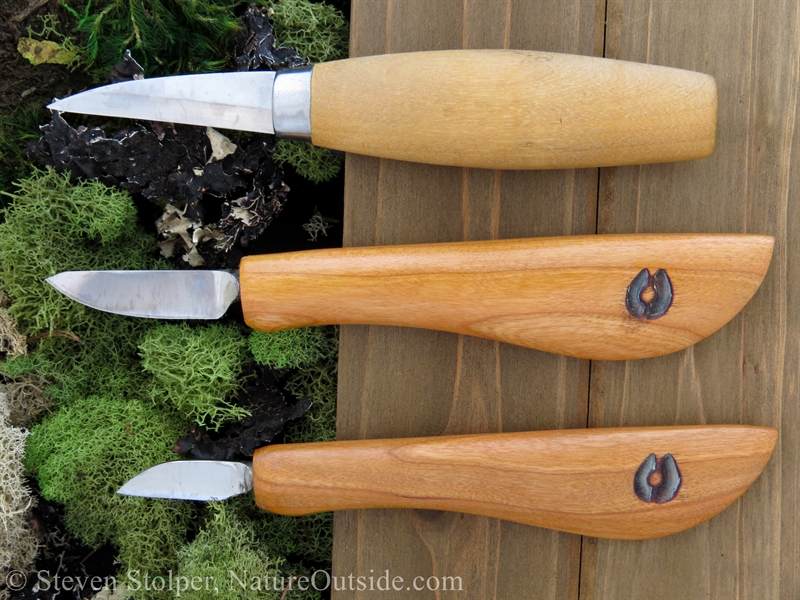
Carving knives come in a variety of shapes and sizes.
Carving/whittling is a wonderful way to improve your knife skills and make fun handicrafts. Carving knives are designed specifically for wood carving. Their comfortable handles and small blades help you to concentrate on mastering carving technique.
Carving knives come in a variety of blade lengths, each adapted for carving different details. Most have blades between 1.125 – 3.25 inches long. The blades are thin, designed for easy maneuverability.
You can find carving knives in high carbon steel and in stainless steel.
I use my carving knives to practice technique. I often use this book as the basis for my practice sessions.
4. A Crooked Knife
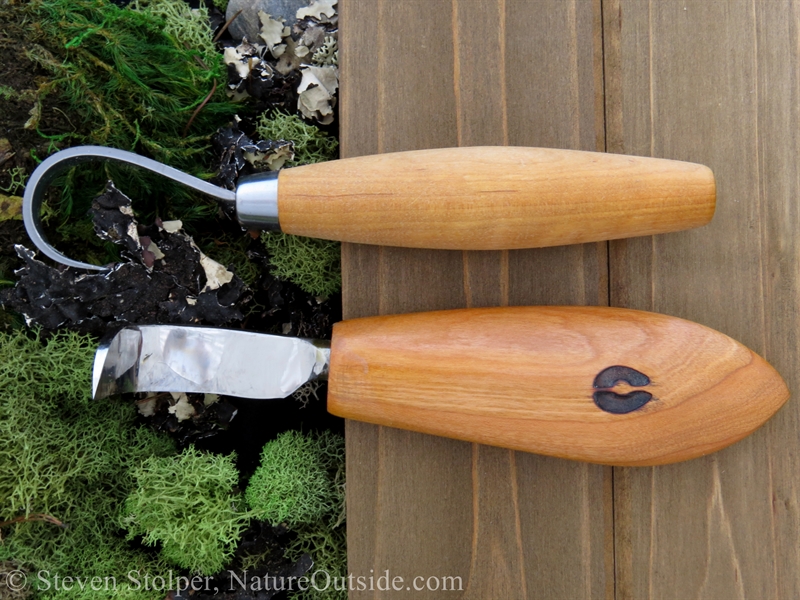
Crooked knives are used to create curved wood surfaces.
The crooked knife (also called “crook” or “hook” knife) is for slicing and shaving curved surfaces. You grasp the knife with the cutting edge facing you, and draw it toward yourself.
Many outdoorsmen enjoy carving spoons, cups, and bowls out of green wood. And a crooked knife’s curved blade is for hollowing out the inside of the bowl. You can also use it to shape a rounded wood surface, like an axe handle or canoe paddle.
The crooked knife was a favorite tool of northeast Native Americans.
5. A Mora Knife
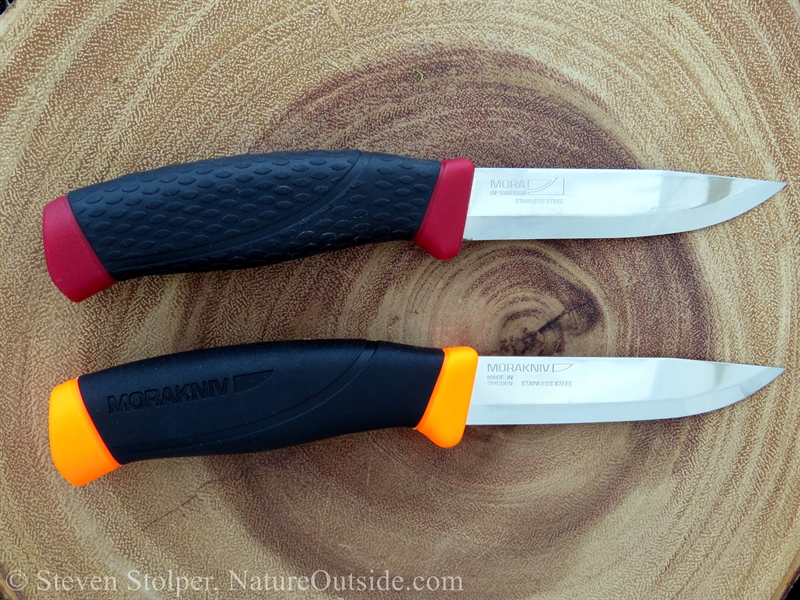
Mora knives are high quality and inexpensive. I call them the “Honda Civics” of knives.
While I try not to mention brand names, I make an exception for Mora, a Swedish knifemaker. Mora makes the “Honda Civic” of knives. These knives are inexpensive general-purpose tools. The blades are high quality for the price and have a Scandinavian grind. You can purchase a Mora knife in a variety of styles, blade lengths, and materials.
Mora knives are ideal for students because they are inexpensive. I have heard a joke that when a Mora becomes dull, you don’t sharpen it. You throw it away and buy another Mora!
Jokes aside, these inexpensive high-quality blades make handy tools. Students use Mora knives in my beginning survival classes. It’s a good first knife if you want to try using a Scandinavian grind.
But I don’t recommend a Mora knife as your primary wilderness knife. Most Mora knives have a “stick tang” (sometimes called “rat tail tang”). The blade material narrows to a metal “stick” that is embedded in the plastic or wood handle. This makes the knife less robust than a similar full tang knife. Also, many Mora knives have a rounded spine, which cannot be used to strike a firesteel.
6. A Folding Knife
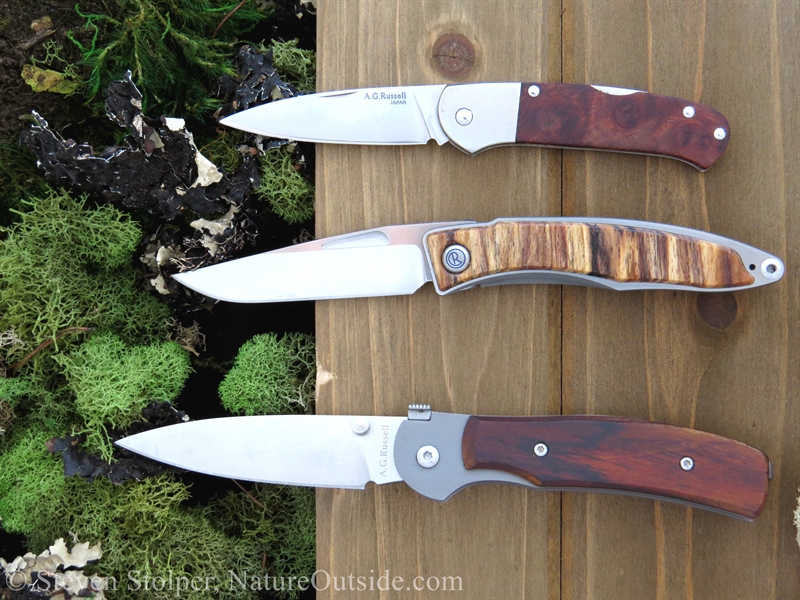
Gentlemen’s folders come in a variety of sizes and price points. The handles are usually made from natural materials.
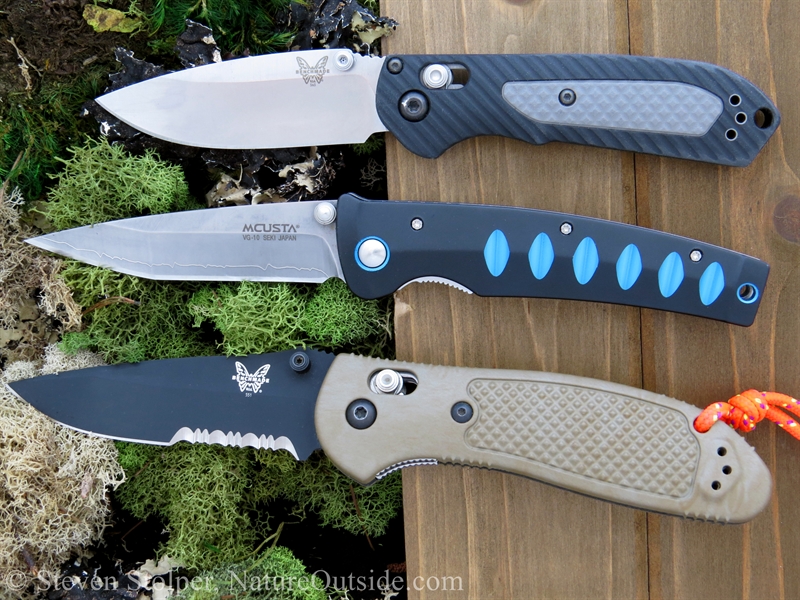
These “working folders” are designed for every day carry.
It was once common in the United States for men and boys to carry pocket knives. These tools are still useful today. I use mine to open packaging, cut cordage, whittle, and to eat when the cafeteria at work runs out of silverware.
The “gentlemen’s folder” is usually a high end pocket knife with a handle made from natural materials. These are intended to be heirloom knives passed to future generations.
More common is the lockable folding knife made with plastic or aluminum handles. These are intended for every day carry and have larger and thicker blades for medium-duty utility work.
My favorite locking mechanisms are the Axis lock and the lock-back style. I own a few liner lock knives, but don’t like that I need to place my fingers in the path of the blade to release the lock.
I always carry a pocket knife with me as I go about my daily life. But be aware that there are public places where you cannot legally carry a pocket knife (i.e. airports and sporting events).
7. A Kephart
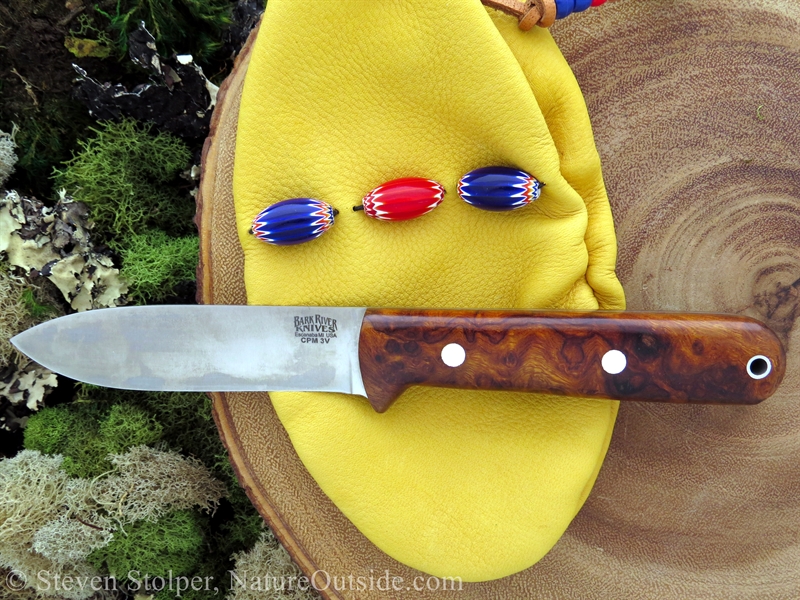
A Kephart style knife has a long, thin blade and rounded handle.
Horace Kephart wrote his famous book, The Book of Camping & Woodcraft: A Guidebook For Those Who Travel In The Wilderness in 1906. Kephart, a forefather of modern bushcraft, had strong ideas about what makes a great outdoor knife.
Kephart style knives have blades between 4 – 5 inches long with thin full or convex blades. The handles are gently rounded and feel comfortable in the hand.
There are many makers of Kephart style knives. And I recommend you try a Kephart if you are unhappy with the handle contours of more modern knives. It’s also a good choice if you are looking for a thinner blade. The Kephart is a simple, elegant design that proves itself able to handle many tasks.
8. A Nessmuk
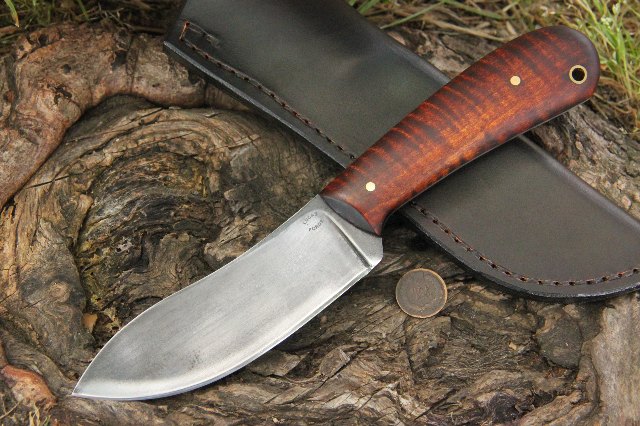
This modern take on a Nessmuk has a smaller hump toward the point of the blade.
George W. Sears, better known as “Nessmuk”, was one of the first authors to write about wilderness camping. His 1920 classic, Woodcraft and Camping, gives us insight into what wilderness camping was like in the early 20th century.
Nessmuk style knives have a distinctive “hump” toward the pointed end of the blade. This provides purchase for your hand when using the knife for skinning animals or delicate camp-crafting. Many manufactures produce both traditional and modern shaped Nessmuk knives.
I recommend Nessmuk knives to someone looking to experiment with techniques that require gripping the blade. They also appeal to people wanting a more traditional, or retro knife.
9. A Puukko
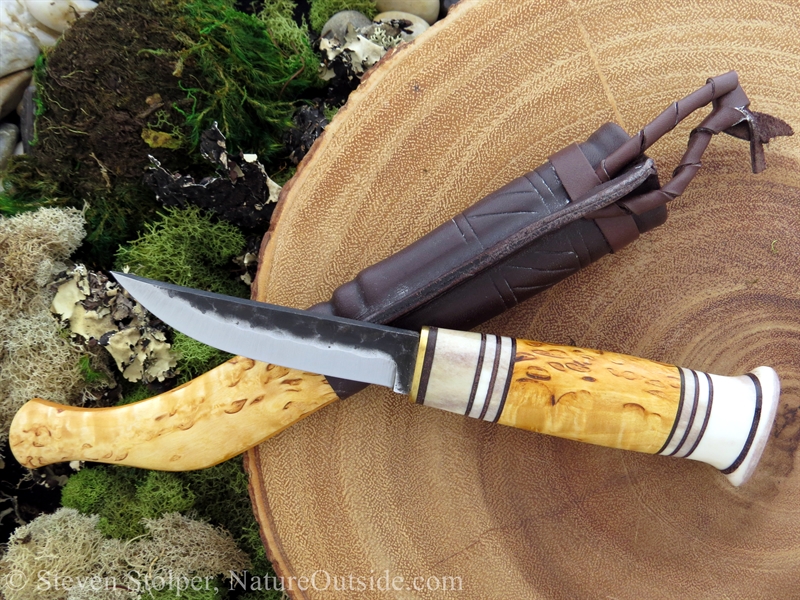
This Finnish puukko has a handle made from reindeer antler, birch, leather and brass. Notice the sheath is also made from leather and birch.
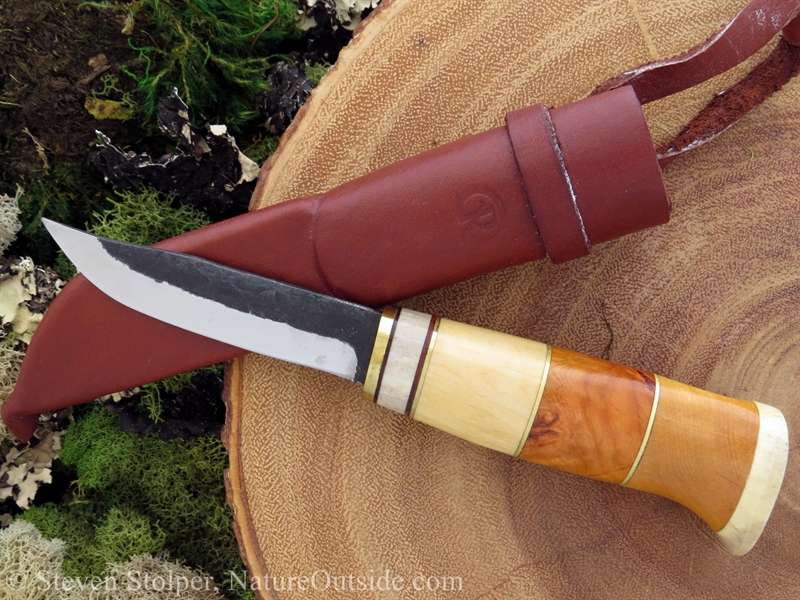
Notice that the tip of the knife angles slightly upward. The handle is made from bone, wood, and root material.
A puukko is a Nordic general-purpose belt knife used for woodcraft and hunting. Its name derives from the Finnish word “puukotta,” which means “to stab.” The prefix “puu” means “wood” in Finnish.
The puukko comes from the indigenous Sami people who inhabit Norway, Sweden, northern Finland and parts of Russia. They use the puukko for the daily tasks of outdoor living.
In general, the puukko is a smaller knife, but they come in a variety of shapes and sizes. Blade lengths generally range from 3 – 5 inches. You can find these knives in both high carbon steel and stainless.
The Puukko has a hidden “stick tang” with handles made from plastic or natural materials. Natural handles are composed of a variety of materials stacked together in concentric rings surrounding the stick tang. Common materials include reindeer antler and bone, wood, leather, birch bark, and brass.
The puukko is a source of national pride, and I find each country has a slightly different take on the knife. I marvel at the fancier handles of Finnish puukkos. I enjoy their fit and finish (pun intended). I also admire the superb craftsmanship of these knives – especially when the blade still bears marks from the forge.
Puukko knives excel in cold temperatures when used with gloved hands. The rounded handles are comfortable and easy to grasp. Puukkos make great utility knives and can accomplish most outdoor tasks with ease.
10. A Swiss Army Knife or Multi-tool
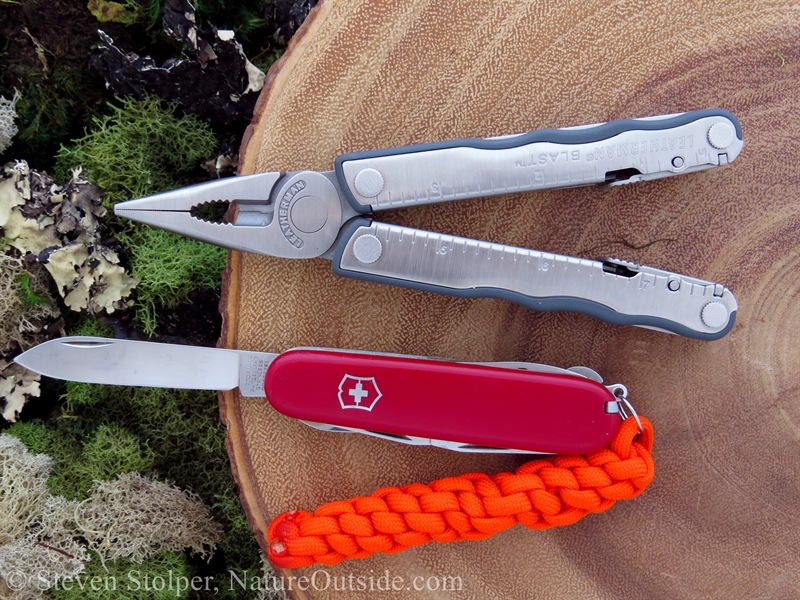
I carry a multitool on overnight trips to repair gear.
When I was growing up, almost every child owned a Swiss Army Knife. Today, they have largely been replaced by multitools.
I carry a multitool on extended overnight backpack trips and in fixed camps. While backpacking, I adjust equipment with the pliers, tighten loose screws with the screwdriver, and punch holes with the awl. In a fixed camp, the can opener and bottle opener come in handy. I also use the saw as a shortcut to create the notch in a hearth-board when I carve a bow-drill set.
11. Swivel Knife
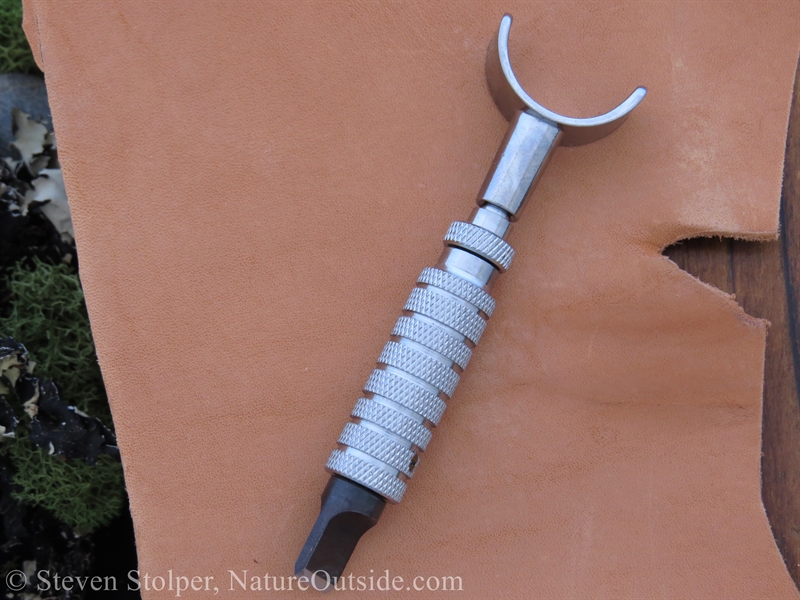
The swivel knife cuts into vegetable tanned leather so that you can tool intricate patterns.
If you get serious about leatherwork, you may want to own a swivel knife. This knife cuts into (not through) leather. You use it to etch a pattern into leather so you can tool (stamp) a design into it.
The knife has a chisel-edged blade that you hold upright between your thumb and index finger. You pivot the knife using your thumb and index finger as you drag the blade across the leather. Your pointer finger rests in a saddle at the top of the knife and applies downforce to make the cut.
Try using this knife to carve a pattern into vegetable tanned leather. Then tool it to complete your design.
12. A PSK knife
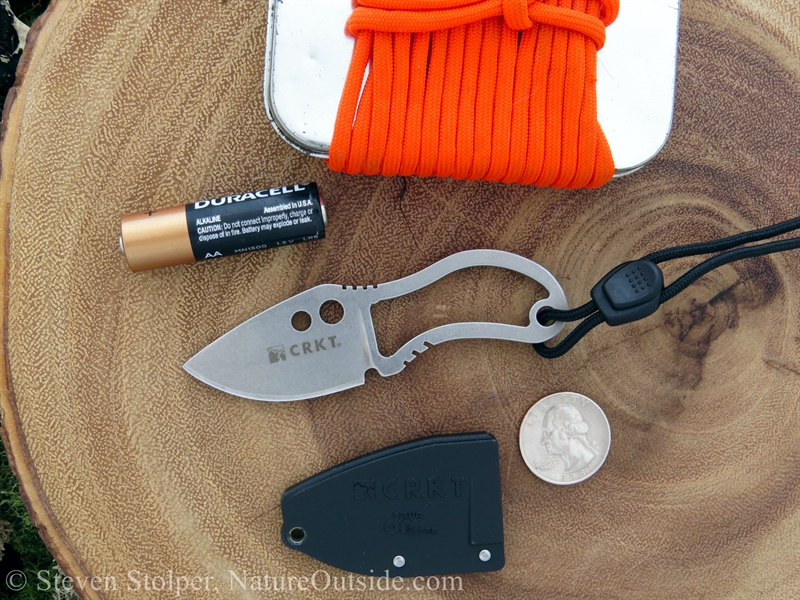
A PSK knife is designed to fit into a small tin you carry in your pocket.
Many outdoorsmen carry a “Personal Survival Kit” on their person. I’ve written about my PSK in a previous article. This kit usually contains a cutting tool, equipment for water purification, a flashlight, and fire-starting equipment as well as tinder. You carry the kit on your body, in a pants or vest pocket.
The goal is to have these essentials on your body in case you are separated from your backpack. This happens more often than you think. And I carry my PSK on overnight trips.
These kits are usually contained in a pocket-size metal tin or plastic pouch. For many years, people used Altoids candy tins for their PSKs. This means your PSK knife should be small enough to fit in an Altoids-size tin. Manufacturers make both fixed-blade and folding knives specifically for this purpose.
Learning to use such a small blade is an eye-opening experience. You learn what you can do with a small knife, and discover alternative means to cut or break natural materials.
It’s not the Knife, it’s the User
I hope you enjoyed this article and it prompts you to try different outdoor knives and learn what they can teach you. Ultimately, it is the skill of the user that is important, not the provenance of the blade. So when you think about bushcraft knives, ask yourself “What can this knife teach me?” This question may lead you in new and surprising directions.
Share your thoughts on bushcraft knives in the comments below.
Related Articles on NatureOutside
Bushcraft Knife Safety – 9 Tips to Avoid Accidents
Bushcraft Knife Skills – Practice with the Masters (Video)
For fun facts and useful tips, join the free Bushcraft Newsletter.



Could you tell me the model of that Bark River survival knife, and the model of the lower A.G. Russel gentleman’s folding knife?
Additionally, could you tell me a good place to shop around for convex ground survival knives? They have been very difficult to come by.
Lee, the Bark River survival knife is the Bravo-1 (rampless), in A2 steel. The handle material for this particular one is dark copper elder burl, with mosaic pins.
The lower A.G. Russel gentlemen’s folder is the K12 (3″ blade) with 9Cr13CoMoV steel. The handle material is Cocobolo. I like it a lot.
For convex ground survival knives, I suggest looking at places that sell Fallkniven and Bark River. I think the older model Fallknivens are still a good value.
Good luck in your knife search!
Thank you very much! I had actually spent quite a few hours trying to figure out which model of BR knife that was, it looked like almost everything I was looking for in a knife (although I would have preferred a drop point.) It wasn’t until I actually downloaded the image to send to a BR distributor and saw the filename that I figured out what model it was. I opted to go for 3V and most of the varieties were unavailable (all were LT which I didn’t mind, it actually seems like a better thickness) so I ultimately had to get one with a ramp that was considerably less handsome (standard black micarda.)
I’m expecting the delivery today, if I order another BR knife in the future I know what material to order, thank you! The A.G. Russell is probably the next order of business though.
Great, Lee! If you don’t want the ramp, I believe Bark River will grind it off for you. You can contact them directly to learn more.
Thank you so much for all of your interested and advice
I love knives and I like to make them
You’re welcome, Abdulftah. It’s terrific that you make your own knives. I greatly admire people who have that skill.
Hello 👋🏻,
Steve great read . Could you please tell me who
Made the wood lore style knife 🔪 in the no 2
Category second knife. It has the California Buckeye Burl handles on it . Thanks so much for your time and knowledge.
All the best.
Shane Sims
Shane, I’m glad you enjoyed the article! The knife is made by a small company called, Adventure Sworn. I have sent you an Email with information about the company. The model in the picture is an “Adventure Sworn Classic.”
The company is often backlogged and it can be up to a year before you receive your knife. If they get backed up enough, they stop taking custom orders for a while and only offer “available knives.” There is also an active secondary market for these knives.